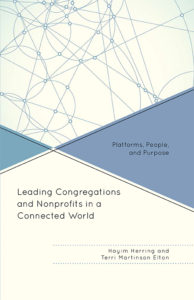If individuals lead entities in the for-profit, nonprofit or governmental sectors, should they be held to a higher standard of ethical accountability? This perennial question is worth examining, especially when they lead powerful or influential entities that can have a direct positive or negative impact on our lives. For me, the answer is a clear, “Yes!” and there are others who have studied dimensions of leadership in some of these sectors who agree.
Jim Collins, a highly-respected leadership expert, implies that great leaders have an ethical compass. He explains in his book, Good to Great that a common trait of the rare individual who achieves “Level V Leadership,” is the executive who blends personal humility with extreme professional focus on achieving a corporate vision. A Level V leader shares credit with others, accepts blame and responsibility for mistakes and surrounds himself or herself with people who are equally committed to making whatever they do better. But in that quest, they never lose sight of humility, which is another way of saying that their pursuit of excellence embraces the demand to treat team members with dignity.

Another leadership framework is “the triple bottom line” (TBL). The TBL, developed by business consultant Andrew W. Savitz, measures three dimensions of performance: people, planet and profits. In other words, unlike traditional reporting frameworks which focus only on profits and shareholder value, the TBL “captures the essence of sustainability by measuring the impact of an organization’s activities on the world… Including both its profitability and shareholder values and its social, human and environmental capital” (Savitz, The Triple Bottom Line). While there is disagreement on how to calculate the TBL, it clearly includes ethical dimensions, because it strives to account for the impact on the environment and on improving people’s lives through measures like job growth, personal income and the cost of underemployment in creating sustainable companies.
Leaders in government should also be expected to be ethical individuals. Yes, they must make complex choices in which moral values are sometimes in conflict with one another. For example, taking military action, which will cause the loss of life, but preserves the freedoms that we enjoy, or creating jobs that lift people out of poverty while also considering the potential impact of environmental destruction, can make the needle on one’s inner ethical compass spin around opposite poles. But, but having an ethical compass is a minimal requirement that we have the right to expect from officials whom we elect.
Whether in government, the for-profit and nonprofit sectors, and in the spiritual realm, leaders have flaws. They also have and need egos–that is what enables them to pursue greatness. But whether their egos are directed to their own aggrandizement or to grand ideas that benefit others is what distinguishes an unethical leader from an ethical leader. And amoral leaders, those who do not take ethical considerations into account, ultimately become immoral leaders because the benchmark of their success is concluding a deal at any and all costs.
Over the past couple of decades, we’ve seen some mutual convergence of ideas around leadership in the for-profit and nonprofit communities. One of those ideas is that morality matters both in the for-profit and nonprofit sectors. For-profit leaders are being held to a higher standard-just look at what is happening with startups like Uber, or established corporations like Wells Fargo, that are now under fire for highly unethical business practices. And it’s no accident that Facebook and other global social media giants and Apple, a company that dominates the smartphone and tablet industry, are facing criticism about their passive, hands-off approach to how people use their products.
Religious leaders rightfully come under fire for cloaking themselves with a mantle of morality while engaging in sexual and financial predatory practices. Simply because a person is a religious leader is no longer a guarantee that he or she possesses a moral compass. We feel a special outrage when individuals who are supposed to embody the highest ethical dimensions of human behavior fail themselves and hurt others.
And for those who are familiar with the Bible, Moses, one of the great spiritual leaders of all times, learns that there are no privileged moral dispensations—without exception. (Memo to religious leaders: don’t forget daily Bible study, preferably with someone who has internalized relevant ethical teachings.) Despite his bravery in challenging the status quo by confronting Pharaoh, an act that continues to inspire moral leadership today, and Moses’s 40 years of leadership in harsh desert conditions with a generation of unruly people, he is punished for disparagingly referring to them as a group of “rebels” (Numbers 20:10).
That punishment seems unduly harsh. Perhaps even more severe, his brother, Aaron, who at that moment is only standing silently by his side, is also disqualified as a leader. Though considered exceptionally humble, Moses’s singularly arrogant rebuke invalidates his leadership and it his successor, Joshua, who will lead the people into the promised land. Here is an exceptionally high standard of morality at work: great leaders cannot ridicule their communities. They may demonstrate contrition and make restitution where possible, but because they are expected to embody high ideals, once they behave unethically in such a public manner, their actions communicate that ethics don’t matter, a message that can potentially normalize unethical behavior throughout a community.
When you build yourself up by putting others down, you’ve lost your ability to lead. When you remain silent in the face of leaders who disparage others, you also forfeit the right to lead. And don’t give up in thinking that’s an impossible standard to which to hold leaders in any sector. Perfection from leaders? No– that’s an impossible standard. But we can and should expect them to struggle to be moral, compassionate and respectful of every person. Argue robustly over principles and beliefs, engage in debate about what is most beneficial to community and country, but set a tone that attacks the merits of ideas, and not the quality of the people who espouse different points of view.



 We see a significant role for congregations and nonprofits around the issue of community. But given how fragile and complex community is today, we believe that congregations will benefit by learning from one another. One opportunity for shared learning is in gaining greater understanding about the limits of digital space in engaging members and participants. What kinds of “conversations” are effective on digital platforms and which are best held in a physical space? What happens when a professional or volunteer publishes information about an issue that is unintentionally misleading or inaccurate—or simply false? One of clergy leader in our study framed the issue this way. He said that for now, he’ll take an old-fashioned town hall meeting about an important issue over a digital discussion because “there’s an accountability piece missing” online. When people don’t have to make eye contact with one another, they have to grapple with the impact of their words.
We see a significant role for congregations and nonprofits around the issue of community. But given how fragile and complex community is today, we believe that congregations will benefit by learning from one another. One opportunity for shared learning is in gaining greater understanding about the limits of digital space in engaging members and participants. What kinds of “conversations” are effective on digital platforms and which are best held in a physical space? What happens when a professional or volunteer publishes information about an issue that is unintentionally misleading or inaccurate—or simply false? One of clergy leader in our study framed the issue this way. He said that for now, he’ll take an old-fashioned town hall meeting about an important issue over a digital discussion because “there’s an accountability piece missing” online. When people don’t have to make eye contact with one another, they have to grapple with the impact of their words.

